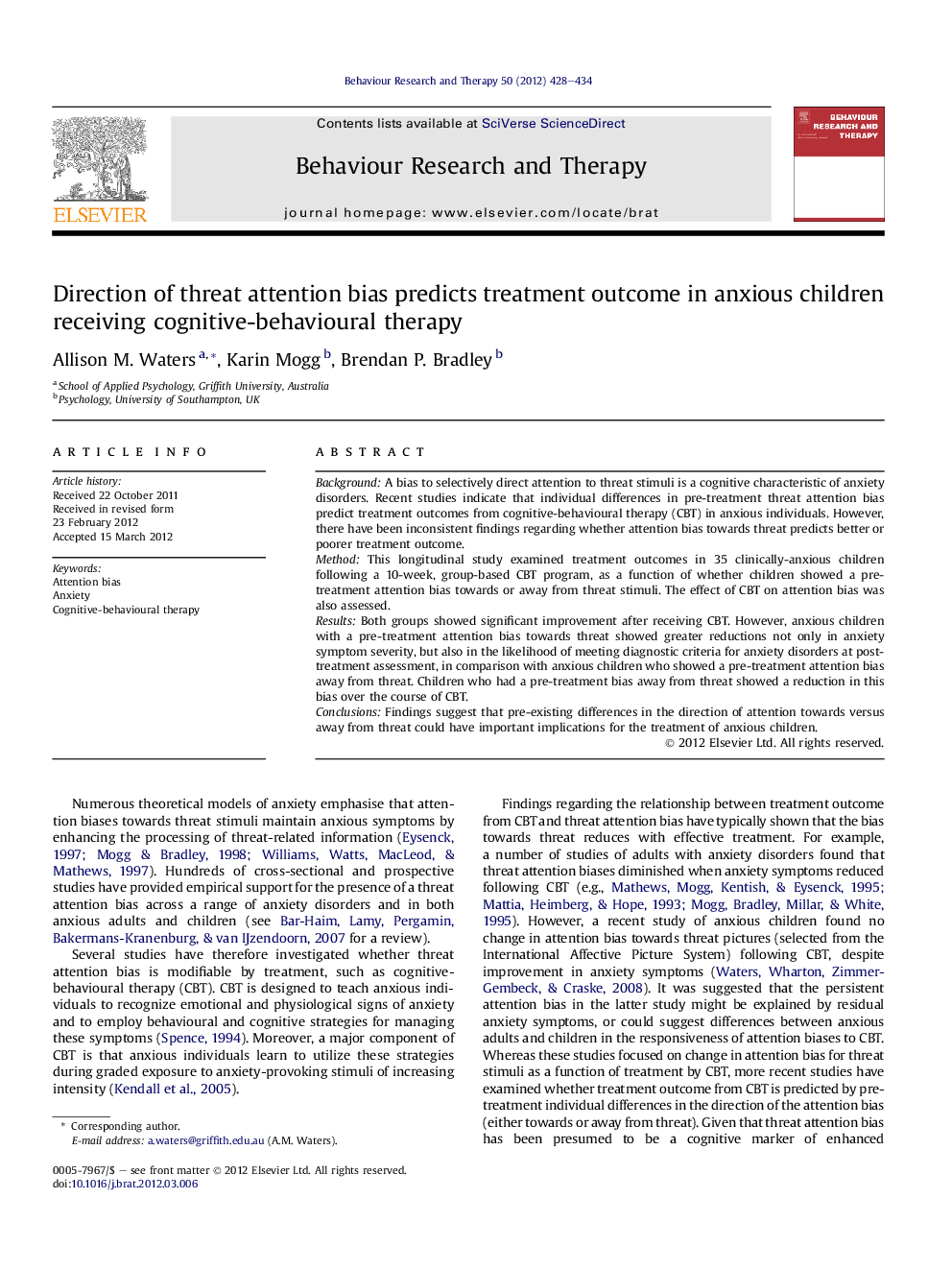| کد مقاله | کد نشریه | سال انتشار | مقاله انگلیسی | نسخه تمام متن |
|---|---|---|---|---|
| 901957 | 916099 | 2012 | 7 صفحه PDF | دانلود رایگان |

BackgroundA bias to selectively direct attention to threat stimuli is a cognitive characteristic of anxiety disorders. Recent studies indicate that individual differences in pre-treatment threat attention bias predict treatment outcomes from cognitive-behavioural therapy (CBT) in anxious individuals. However, there have been inconsistent findings regarding whether attention bias towards threat predicts better or poorer treatment outcome.MethodThis longitudinal study examined treatment outcomes in 35 clinically-anxious children following a 10-week, group-based CBT program, as a function of whether children showed a pre-treatment attention bias towards or away from threat stimuli. The effect of CBT on attention bias was also assessed.ResultsBoth groups showed significant improvement after receiving CBT. However, anxious children with a pre-treatment attention bias towards threat showed greater reductions not only in anxiety symptom severity, but also in the likelihood of meeting diagnostic criteria for anxiety disorders at post-treatment assessment, in comparison with anxious children who showed a pre-treatment attention bias away from threat. Children who had a pre-treatment bias away from threat showed a reduction in this bias over the course of CBT.ConclusionsFindings suggest that pre-existing differences in the direction of attention towards versus away from threat could have important implications for the treatment of anxious children.
► We examine whether pre-treatment attention bias predicts outcome after CBT.
► Pre-treatment bias towards threat predicted larger post-treatment anxiety reductions.
► Pre-treatment bias away from threat reduced over the course of CBT.
► Pre-existing direction of attention bias could have important treatment implications.
Journal: Behaviour Research and Therapy - Volume 50, Issue 6, June 2012, Pages 428–434